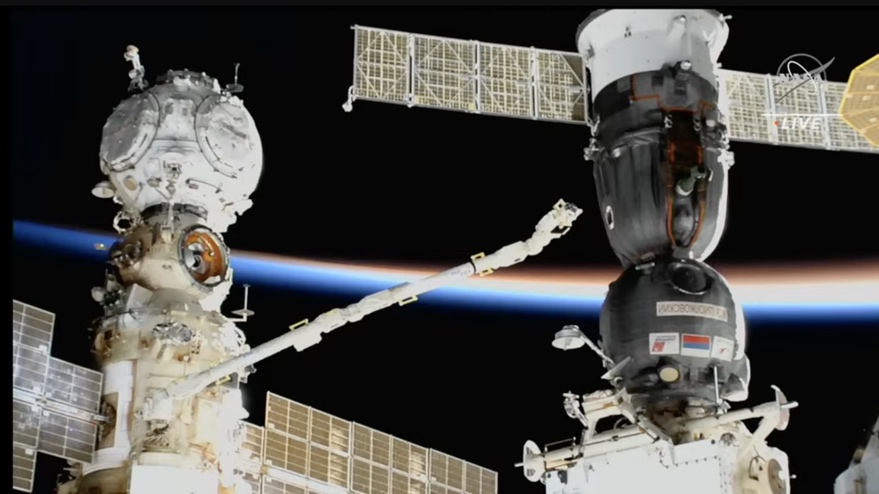WASHINGTON — NASA is delaying a spacewalk at the International Space Station by two days to support the Russian investigation into a coolant leak on a Soyuz spacecraft docked there.
In a statement late Dec. 16, NASA announced that a spacewalk by astronauts Josh Cassada and Frank Rubio, previously scheduled for Dec. 19, would be pushed back to Dec. 21. The spacewalk is the second of two planned to install a new set of solar arrays on the station, following one Dec. 3.
NASA said the postponement would allow flight controllers to use the station’s Canadarm2 robotic arm to inspect the exterior of the Soyuz MS-22 spacecraft docked there. That spacecraft suffered a coolant leak late Dec. 14, canceling a Russian spacewalk that was about to start. The “majority” of the coolant in that loop in the spacecraft leaked out by 1:30 p.m. Eastern Dec. 15, NASA said.
Both the cause of the leak and its severity remain uncertain. The Canadarm2 observations are meant to augment those performed hours after the leak by the European Robotic Arm attached to the Nauka module on the station’s Russian segment. Those observations were reportedly inconclusive in identifying the source of the leak.
Despite the lack of information about the source of the leak, Roscosmos officials have speculated it was caused by a micrometeoroid impact. In a Dec. 16 statement posted by Roscosmos on Telegram, a social media service, Viktor Voropaev, lead engineer at the Keldysh Institute of Applied Mathematics, said he believed an impact by a micrometeoid linked to the Geminid meteor shower was the “main suspect” for the leak. He offered no other evidence to support that conclusion.
Roscosmos also denied a report in Russian media Dec. 16 that temperatures in the Soyuz spacecraft rose as high as 50 degrees Celsius after the loss of coolant. Temperatures in the spacecraft are instead about 30 degrees Celsius, which Roscosmos described as only a “slight change” and do not pose an immediate threat to the spacecraft or people on the station.
NASA, in its statement, noted that Roscosmos performed a test of a thruster on the Soyuz Dec. 16. “The systems that were tested were nominal, and Roscosmos assessments of additional Soyuz systems continue,” NASA stated. “Temperatures and humidity within the Soyuz spacecraft, which remains docked to the Rassvet module, are within acceptable limits.”
While there may be no immediate danger, there remain concerns that the spacecraft may not be able to return to Earth as currently planned in March 2023. Soyuz MS-22 launched to the station Sept. 21 with NASA’s Rubio and Roscosmos cosmonauts Sergey Prokopyev and Dmitri Petelin. The loss of coolant could affect not just conditions for the people on board during its return to Earth but also computer systems critical for operating the spacecraft.
Options include operating as-is, with the spacecraft and its crew returning in March; an early return of the Soyuz and its crew, leaving just four people on the ISS until a new Soyuz can be launched; or launching the next Soyuz spacecraft, Soyuz MS-23, without a crew to replace Soyuz MS-22. The last option would likely extend the stay of Prokopyev, Petelin and Rubio until another Soyuz is ready to launch their replacements.
In a Dec. 17 post on Telegram, Roscosmos said that working groups are continuing to investigate the leak and make recommendations for next steps. Decisions on those next steps are planned for a meeting at the end of December.
Roscosmos added that preparations for the launch of Soyuz MS-23 continue at the Baikonur Cosmodrome. “If necessary, it can be accelerated to send it to the ISS at an earlier date.”
